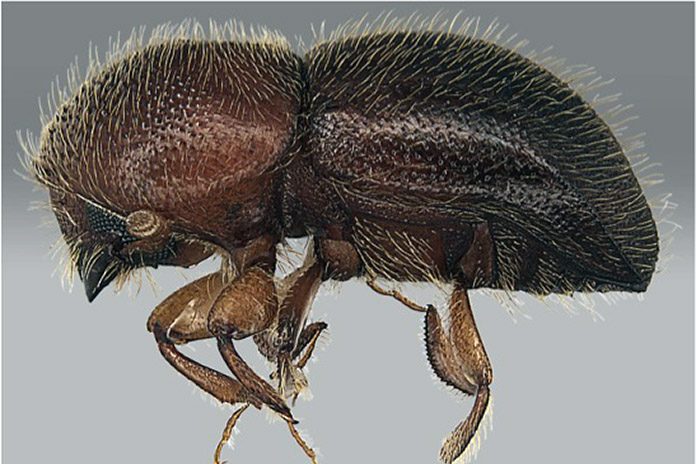
It’s been 20 years since the Oregon Department of Agriculture placed its first traps for exotic wood boring insects in the vicinity of a railroad tie creosoting plant in The Dalles. A lot has happened since amid the constant threat of bad beetles hitching a ride into the state. But the picture would certainly be more bleak without the cooperation ODA has received from the company operating the plant and its efforts to address concerns about bringing in untreated lumber that might harbor these invasive insects.
“If the plant had not helped us deal with these wood boring beetles, I don’t know if we could have done it on our own,” says ODA entomologist Josh Vlach. “The beetle could have established in the area and spread into nearby cherry orchards and eventually to other parts of the state.”
The treatment plant in The Dalles, now owned by AmeriTies, has been in operation for 95 years treating wood components of railroad infrastructure. But it was 1997 that it became known as a high risk location for the introduction of exotic wood boring beetles. The plant imports raw ties from other regions of the US that have been infested by some of these insects, most notably the granulate ambrosia beetle. Xylosandrus crassiusculus attacks hardwoods and is a threat to Oregon’s orchard and nursery industries as well as to forest health and regeneration. However, it was still a few years after those first traps were placed near the tie plant before large numbers of the granulate ambrosia beetle were detected.
“That first year, ODA put out three traps and didn’t catch anything of note, but in 2003, everything changed,” says Vlach. “The plant started to receive hardwood lumber from states back east instead of some of the soft wood lumber primarily from the Pacific Northwest. Apparently, the soft wood lumber wasn’t as good for the changing needs of Union Pacific Railroad, AmeriTies’ primary customer.”
By 2004, just 10 ODA traps yielded 156 of the ambrosia beetles, leading to eradication projects in 2005 and 2006. Those projects successfully eliminated the pest for about 10 years before a population of the wood borers flared up again. In May 2015, two granulate ambrosia beetles were trapped at the plant and additional plants were placed. A year later, an additional 36 of the pests were trapped along with another exotic ambrosia beetle, Euwallacea validus, that was the first record of the species found in Oregon and, indeed, the entire western portion of North America.
The cause of the recent spike is still unknown, but the fact that ODA and AmeriTies have continued monitoring over the years reinforces the value of “early detection, rapid response.”
“Over the years, the company has helped,” says Vlach. “They have helped pay for eradication activities, they have helped with the monitoring, and they have supported compliance agreements that include a halt to shipping in ties from certain areas of the US.”
Over the past decade, an incredible number of non-native insects, including wood borers, have made their way to Oregon. ODA’s LaBonte has been tracking all known new exotic species of terrestrial invertebrates detected and established in Oregon since 2007. Out of roughly 25,000 insects, mites, slugs, and other related spineless species currently in the state, he estimates that about 1,000 are exotic. The number may also just be a tip of the iceberg.
“There has been a huge influx of species and limited resources to detect and deal with them,” says ODA taxonomist Jim LaBonte. “This is a vast tsunami that is probably only going to get bigger.”
Establishing good collaboration with those who may be bringing in some of these species as part of their operation, as in the case of AmeriTies, helps lessen the odds of something bad getting established in Oregon.









